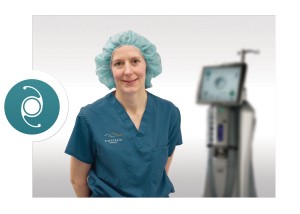Sightpath Medical is excited to present the first in an on-going series of blog posts aimed at helping with conversion of cases, traffic in centers or even staff training.
Today, we present:
5 Tips for Attracting More Cataract Cases

1. Mining the Database & Cross PromotionPatients are accustomed to receiving helpful information and promotions from their ophthalmologists for such items as eyeglasses, contacts and LASIK. Patients may welcome this information because they have a trusting relationship with their ophthalmologists. However, many ophthalmologists don’t promote their cataract offering to their current patients the way they do their existing consumer offerings. This is a missed opportunity for potential financial growth. The addition of femtosecond lasers for cataract surgeryand the influx of baby boomers into the marketplace will begin to create more active competition for these services. This requires a practice to shift the conversation around cataracts from purely a clinical-needs perspective, as has been the case historically, to a more consumer-driven approach. Promoting these services within their current customer base will provide greater resonance and a higher conversion rate, because their patients already have an existing, trusting relationship with the practice. The patients’ past positive experiences can be conveyed to their network of family and friends, passing along implied trust in the practice.
There’s no denying having an effective brochure, direct-mail campaign or website can make a difference in promoting a practice. Equally important is determining where to reach new patients. To find new avenues to reach potential customers, practices should query existing patients to determine how they spend their free time. Do they spend their weekends watching their children/grandchildren play soccer at the local soccer fields? Are they interested in local theatre and regularly attend productions? By determining patterns that may suggest pockets of grouped interest, you can look for events that come to, or near, the practice draw area, and promote your practice around the events. Your existing, satisfied patients who attend these events can act as an evangelist and share their excitement about a practice and its services.
3. Remembering Referral Sources
A strong co-management relationship is key to attracting new patients. You can facilitate building this relationship with area optometrists by including them in communication prepared for potential patients. Whether it is announcing a new surgeon, highlighting a new technology, or something as simple as a general reminder of the services available, allpotential referral sources should be communicated with on a regular basis. On average, it takes seven “touches” to gain a new customer, and the same holds true with referral sources. The more familiar they are with the surgeon/practice, the more comfortable they feel referring their patients. This is just the tip of the iceberg to forming a good co-management relationship, but a great place to start!
4. Conversion is key
Having cataract surgery is a life-changing event. Prospective patients want to understand the procedure and feel assured that they are in competent, capable hands. Patients begin their decision-making process as to whom will perform their cataract surgery at the moment of first contact. The number of “hits” a practice receives on their website or the number of referrals received from optometrists doesn’t matter if a practice can’t convert those patients to procedures. Practices should survey patients who did, and did not opt to move forward with their surgery and identify opportunities for improvement. By tracking when and why potential patients choose not to move forward with their surgery, practices have the opportunity to make adjustments to better retain those patients. Editing the script for those who answer the phone, highlighting the surgeon’s experience and expertise in a waiting room video, or tweaking the days/times/location the surgeon performs surgery to better meet the needs of patients are just a few operational shifts that could be made at little to no cost. Updating patient education materials can also refresh a practice’s image.
5. If you can’t measure it, you can’t manage it
The use of metrics enables a practice the opportunity to evaluate the effectiveness of their marketing programs and to determine their return-on-investment with regard to their marketing spend. Collecting data is important and can be completed in a number of ways, such as adding a “how did you hear about us” line to the intake form, or simply asking the patient and jotting it down. By using benchmarks and comparing the data month-to-month and/or year-to-year, practices can identify trends and focus their efforts on those tactics that prove most effective in increasing procedure volume. However, it is important to note that it doesn’t matter how many “leads” a practice gets if they don’t convert. A good tracking system follows the prospective patient from first contact, through procedure day to accurately measure the success of the marketing program. The quality of the leads is as important as the quantity – and knowing which tactics are effective positions a practice for success.
By employing several of these tactics while staying current with you communications internally, externally and with co-managed partners, your practice should begin to attract more cataract cases. What’s working for you? We’d love to hear your feedback!